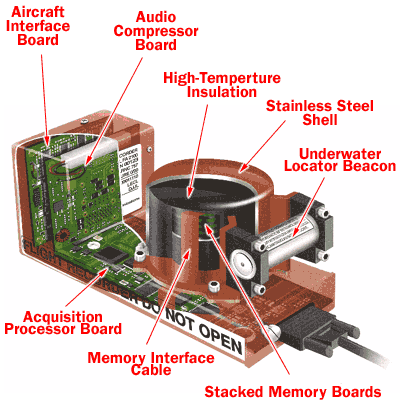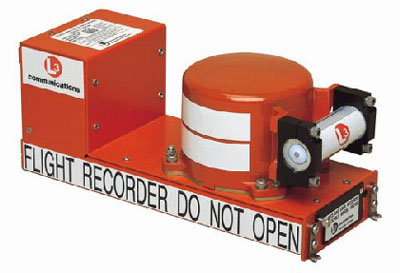Black Box
Published on Nov 23, 2015
Abstract
As the technology progressing, the speed of traveling is also increased. The source to destination became so closer to each others. The main advancement in the field of the air traveling system with the help of airplane.
This is the major discovery of technology. But as the speed increases , the horror of air crash also introduced. Because at a height of 2000m and above if a plane crashes ,it will be a terror for any body. So to take the feed back of the various activities happens in the plane and record them engineers need a mechanism to record such activities .
With any airplane crash, there are many unanswered questions as to what brought the plane down. Investigators turn to the airplane's flight data recorder (FDR) and cockpit voice recorder (CVR), also known as "black boxes," for answers. In Flight 261, the FDR contained 48 parameters of flight data, and the CVR recorded a little more than 30 minutes of conversation and other audible cockpit noises.
Introduction of Black-Box
In almost every commercial aircraft, there are several microphones built into the cockpit to track the conversations of the flight crew. These microphones are also designed to track any ambient noise in the cockpit, such as switches being thrown or any knocks or thuds. There may be up to four microphones in the plane's cockpit, each connected to the cockpit voice recorder (CVR).

Any sounds in the cockpit are picked up by these microphones and sent to the CVR, where the recordings are digitized and stored. There is also another device in the cockpit, called the associated control unit , that provides pre-amplification for audio going to the CVR.
Here are the positions of the four microphones:
Pilot's headset
Co-pilot's headset
Headset of a third crew member (if there is a third crew member)
Near the center of the cockpit, where it can pick up audio alerts and other sounds
Most magnetic-tape CVRs store the last 30 minutes of sound. They use a continuous loop of tape that completes a cycle every 30 minutes. As new material is recorded, the oldest material is replaced. CVRs that used solid-state storage can record two hours of audio. Similar to the magnetic-tape recorders, solid-state recorders also record over old material.
Flight Data Recorders :
The flight data recorder (FDR) is designed to record the operating data from the plane's systems. There are sensors that are wired from various areas on the plane to the flight-data acquisition unit, which is wired to the FDR. When a switch is turned on or off, that operation is recorded by the FDR.
In the United States , the Federal Aviation Administration (FAA) requires that commercial airlines record a minimum of 11 to 29 parameters, depending on the size of the aircraft. Magnetic-tape recorders have the potential to record up to 100 parameters. Solid-state FDRs can record more than 700 parameters. On July 17, 1997 , the FAA issued a Code of Federal Regulations that requires the recording of at least 88 parameters on aircraft manufactured after August 19, 2002 .

Here are a few of the parameters recorded by most FDRs:
Time
Pressure altitude
Airspeed
Vertical acceleration
Magnetic heading
Control-column position
Rudder-pedal position
Control-wheel position
Horizontal stabilizer
Fuel flow
Solid-state recorders can track more parameters than magnetic tape because they allow for a faster data flow. Solid-state FDRs can store up to 25 hours of flight data. Each additional parameter that is recorded by the FDR gives investigators one
More Seminar Topics:
Embedded Web Technology, Embedded System in Automobiles, Electrooculography, Electronic Toll Collection, Electronic Counter-Countermeasures, Electro Dynamic Tether, Easy-To-Swallow Wireless Telemetry, Earthing Transformers For Power Systems, Distributed COM, Direct Current Machines, DD Using Bio-robotics, Data Loggers, Concentrating Collectors, Clos Architecture in OPS, Chip MorphingRelated Seminar Topics
- Lunar Reconnaissance Orbiter Miniature RF Technology Demonstration
- Secure Electronic Voting System Based on Image Steganography
- Securing Underwater Wireless Communication Networks
- Security In Embedded Systems
- Third Generation Solid State Drives
- Face Recognition Using Neural Network